Finally the Skylake-X series is complete. After hastily announcing the 18-core Core i9 last May during Computex 2017, we now have Intel's new 16- and 18-core processors on-hand four months later.
We don't doubt that Intel had planned to release Skylake-X all along, but did they plan to offer something higher than a 12-core part before catching wind of AMD's Threadripper?
It also seems unlikely that they meant to announce the X299 platform in late May and release it in June, made evident by the rushed motherboard development and the mess that ensued.
We received the first Intel Core i9 part – the $1,000 10-core 7900X – in late June along with a few Core i7 models featuring 8, 6 and even 4 cores, but it wasn't until August that we learned the official specifications for Intel's new $1,200 12-core, $1,400 14-core, $1,700 16 core and a $2000 18-core processors, the last two of which we'll be reviewing today.
Before covering the Core i9-7980XE and 7960X in detail, it's worth remembering that during all the chaos of Intel's latest desktop platform release, AMD launched its Ryzen Threadripper series on August 10 including the 1950X and 1920X, the latter being a $1,000 16-core CPU that shamed Intel's then flagship 7900X.
As we are about to see, there was more to come from Intel but at the time we questioned if the $1,200 12-core 7920X could even beat the 1950X and suspected that it would probably take the $1,400 14-core 7940X to match AMD's 16-core CPU. While we don't have the 12-core or 14-core models, Intel has served up the ultra-expensive 16-core and 18-core chips which should give us an idea about where the 12 and 14-core versions will sit, and of course we're always keen to see what the flagship parts have to offer.
To quickly recap, the Core i9-7980XE packs 18 cores and with its support for Hyper Threading it touts an insane 36-threads. Each cores has its own 1MB L2 cache and thus there is a total of 18MB L2 cache. Meanwhile, there is 24.75MB worth of L3 cache and due to the restructuring of the cache for the Skylake-X architecture the 7980XE only has slightly more L3 than the previous generation 6950X.
The 7980XE operates at a base frequency of 2.6GHz with a Turbo Boost 2.0 frequency of 4.2GHz and a Turbo Boost Max 3.0 frequency of 4.4GHz. The 16-core 7960X features a base clock speed of 2.8GHz with the same Turbo Boost frequencies. It has a slightly smaller 22MB L3 cache while there is a total of 16MB for the L2. Both CPUs offer the full 44 PCIe lanes, quad-channel memory support and a 165 watt TDP rating.
Both CPUs use the LGA2066 socket and are supported by existing X299 motherboards. For testing I'm using the Gigabyte Aorus X299 Gaming 9 with 32GB of G.Skill TridentZ RGB DDR4 memory clocked at 1600MHz, so DDR4-3200, using CL14 timings. The GTX 1080 Ti was used for all the testing while we've thrown Vega 64 Liquid Cooled in for a few game tests. The focus though will of course be on the productivity testing, these are 18 and 16-core CPUs after all.
Ryzen Threadripper System Specs |
Skylake-X System Specs
|
Ryzen 7 System Specs
|
|
Benchmark Time
Memory and Application Performance
First up let's check out the memory bandwidth performance. These DDR4 quad-channel memory controllers look to be good for around 62-64GB/s of memory bandwidth when using 3200 memory. Please note all configurations were tested with the same DDR4-3200 CL4 memory.
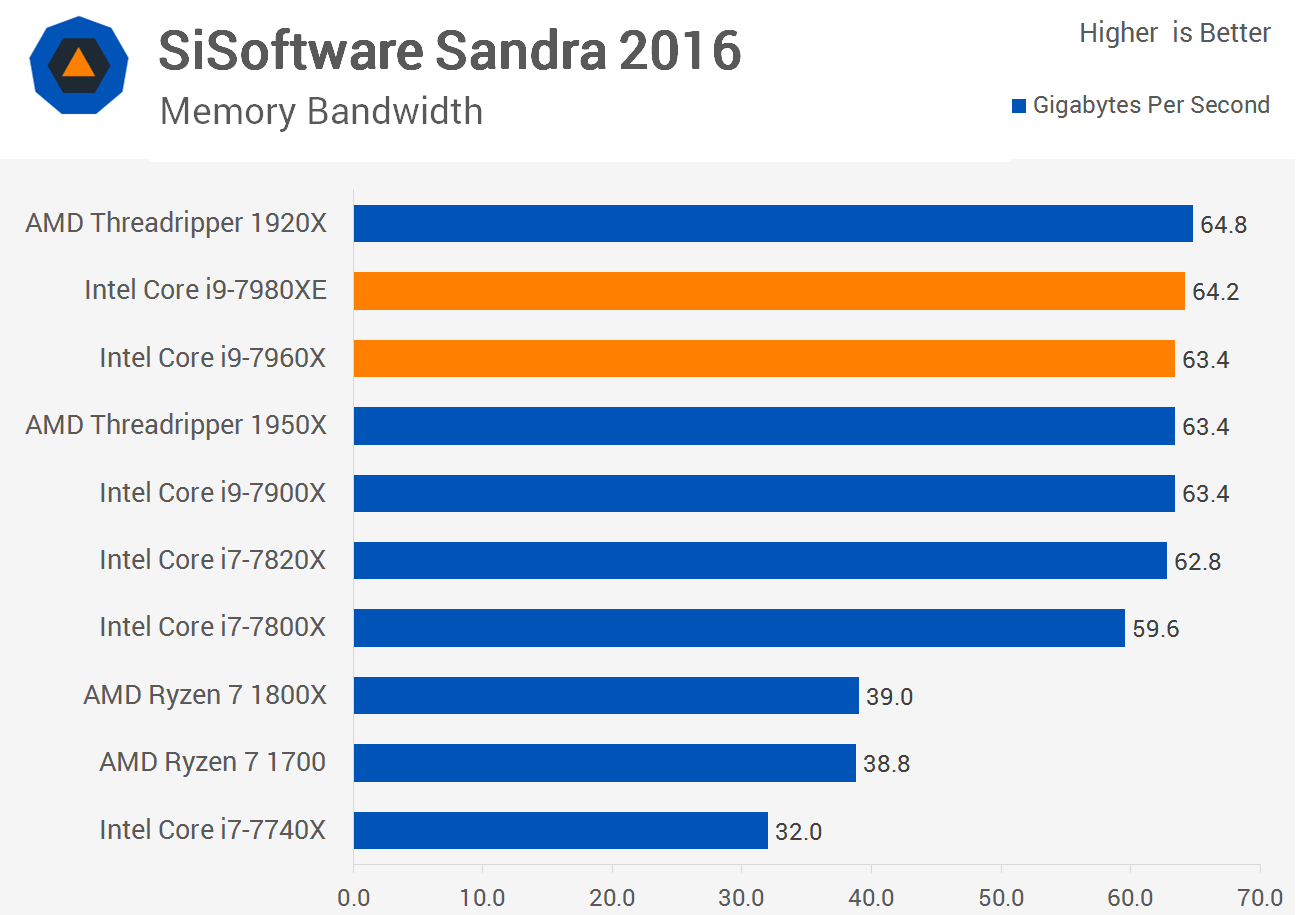
Cinebench R15's multi-threaded test gives us a good idea of how the productivity tests are going to look if all cores and threads can be fully utilized. Here we see that the 7960X is just 4% faster than the the 1950X for the multithreaded workload, both are 16-core parts of course. The the 7980XE is 10% faster than the 1950X with an impressive score of 3317pts, though it does cost twice as much at $2,000 – we'll certainly discuss pricing more at the end of the review.
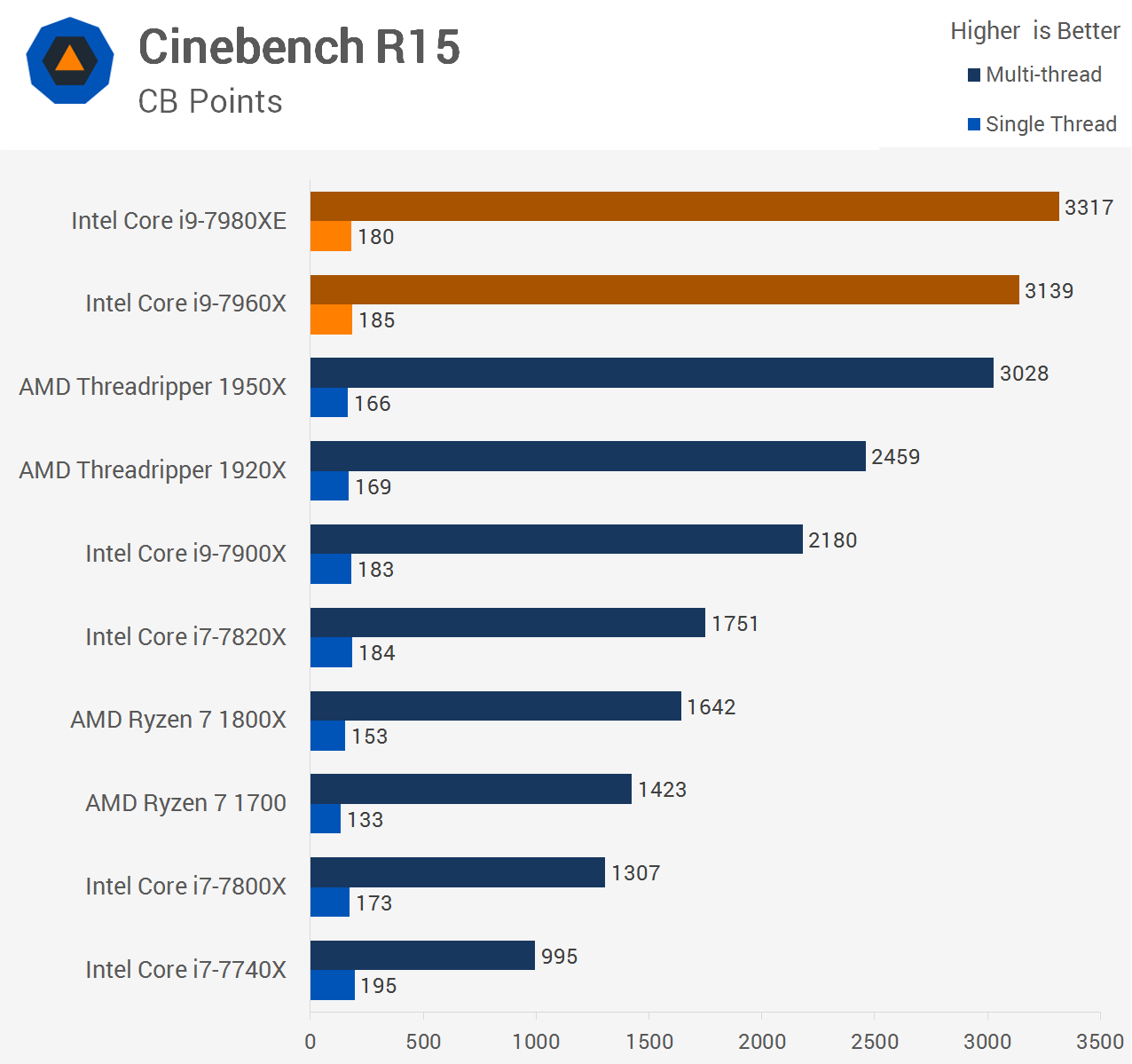
When it comes to single-thread performance, the higher clocked Skylake-X parts are able to best Threadripper.

Before we move onto the more serious benchmarks I just wanted to see how these extreme CPUs stand up in PCMark 10 which looks at office type workloads (typically not core-heavy). To my surprise, Threadripper scored well in this test and did considerably better than the Skylake-X CPUs. The 7980XE looked particularly weak here. Of course none of these CPUs are slow for these more general office type tasks so it's somewhat irrelevant.
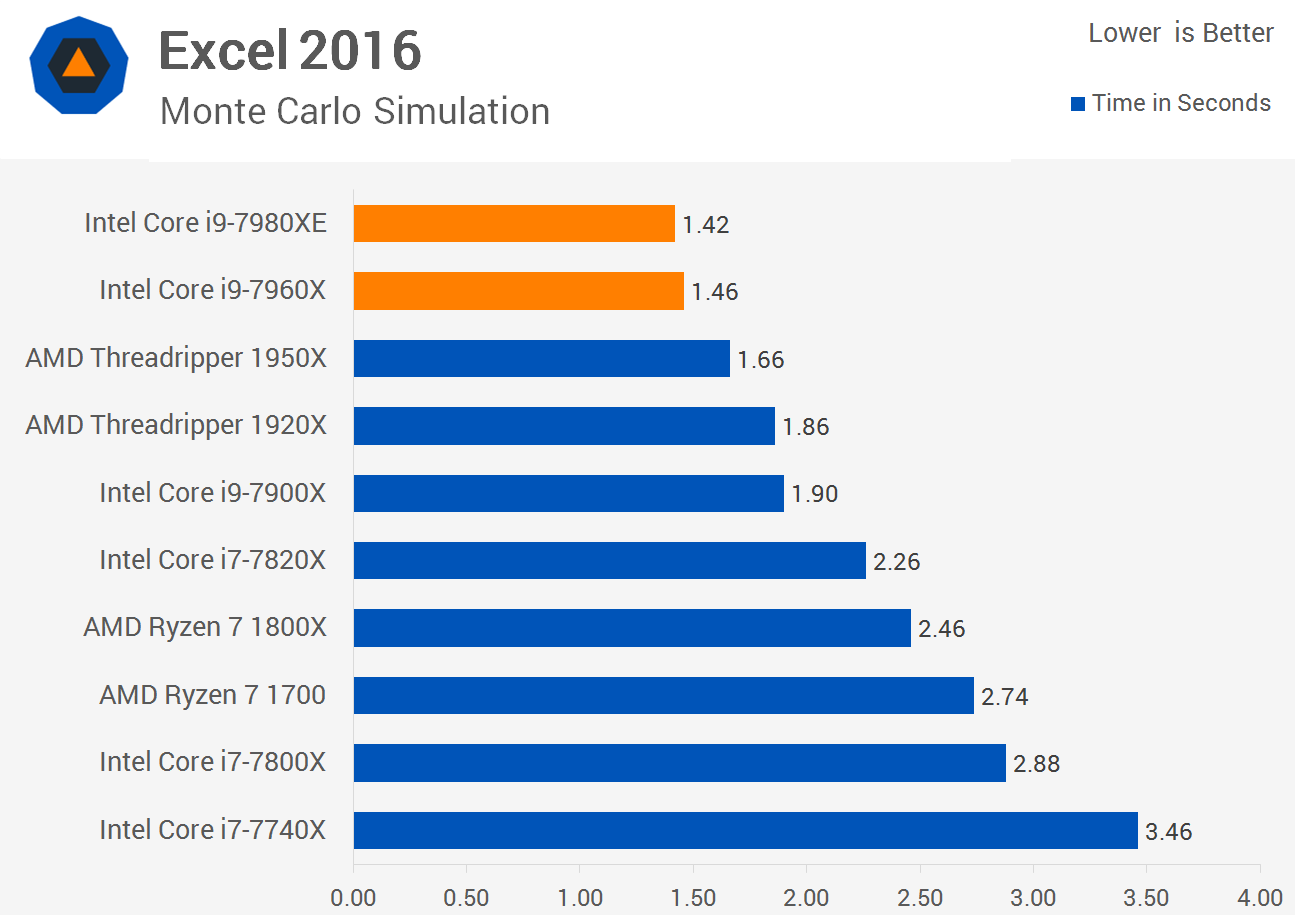
Excel provides us an office type benchmark that can utilize many threads, especially when running the extreme Monte Carlo simulation. Here the Threadripper 1950X really impressed taking just 1.66 seconds. However the 16-core and 18-core Skylake-X parts go one better as they dip down into the 1.4 second range allowing the 18-core part to complete the workload 14% faster.
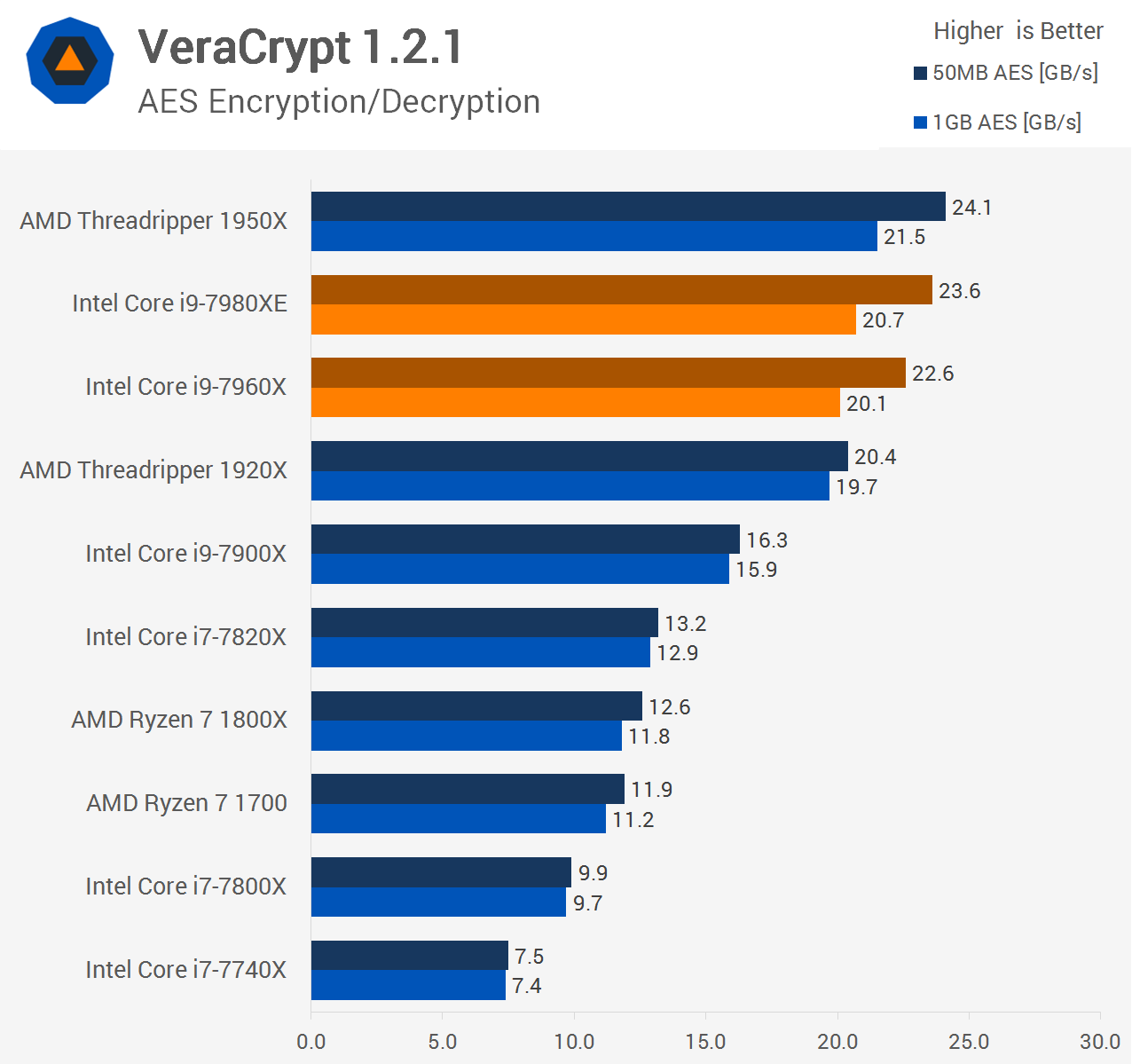
For those of you unaware, VeraCrypt is an open-source utility used for on-the-fly encryption and features optimized implementations of cryptographic hash functions and ciphers which boost performance on modern CPUs. It also supports parallelized encryption for multi-core systems as well hardware-accelerated AES to further improve performance.
In short, it takes full advantage of the many cores these CPUs have on offer and we see that here. That said, the Threadripper 1950X provided the best results and even the 7980XE couldn't beat it – a disappointing result for Intel here.
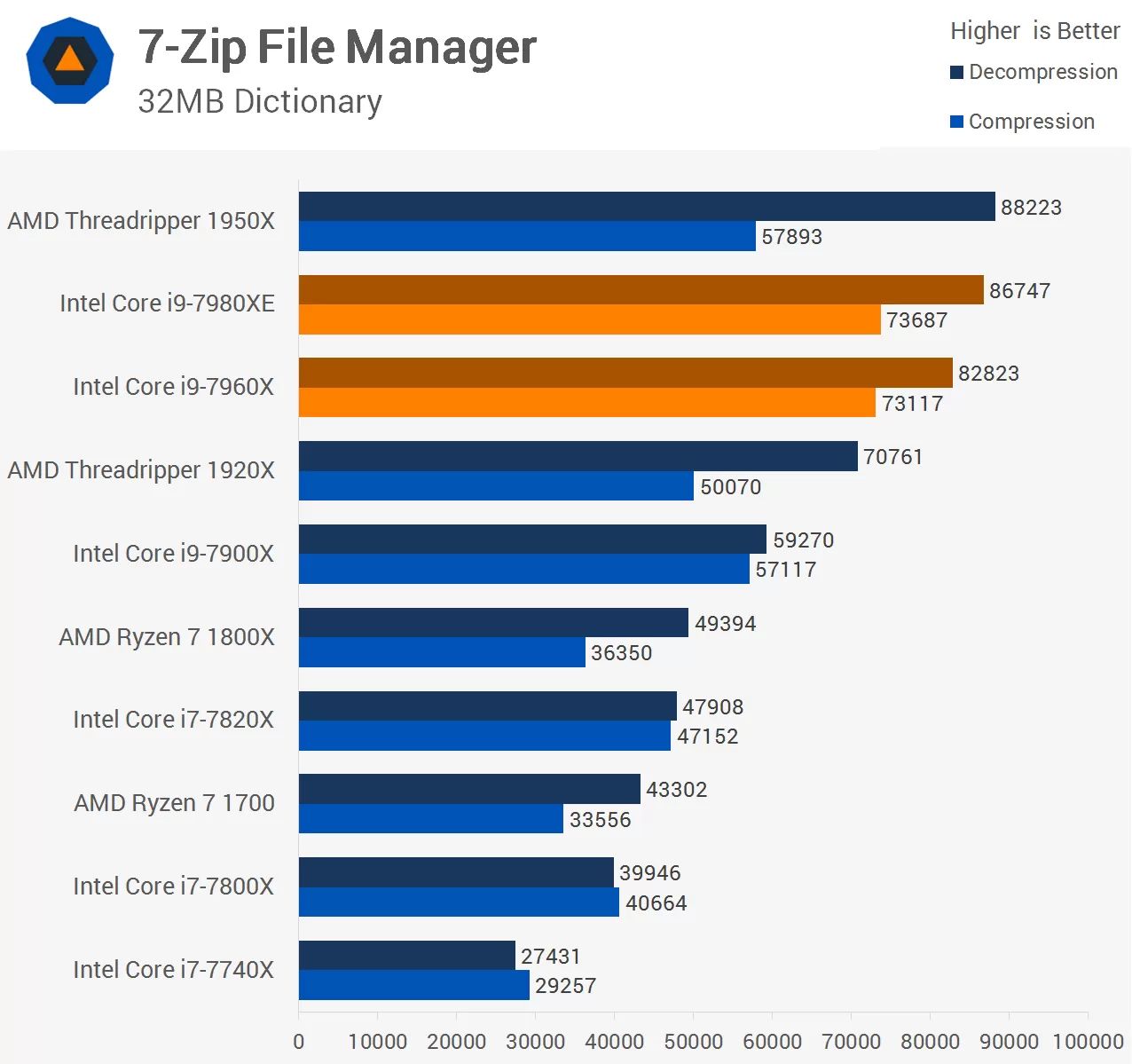
Next up we have non-encrypted compression and decompression performance using 7-Zip. Whereas Hyper-Threading sees a similar level of efficiency when compressing and decompressing, SMT is significantly more efficiency for decompression work.
For decompressing, the Threadripper 1950X is again able to best the 7980XE, though it was much slower for the compression test. If you do a lot of compression work then it looks like Intel high core count CPUs are king here.


